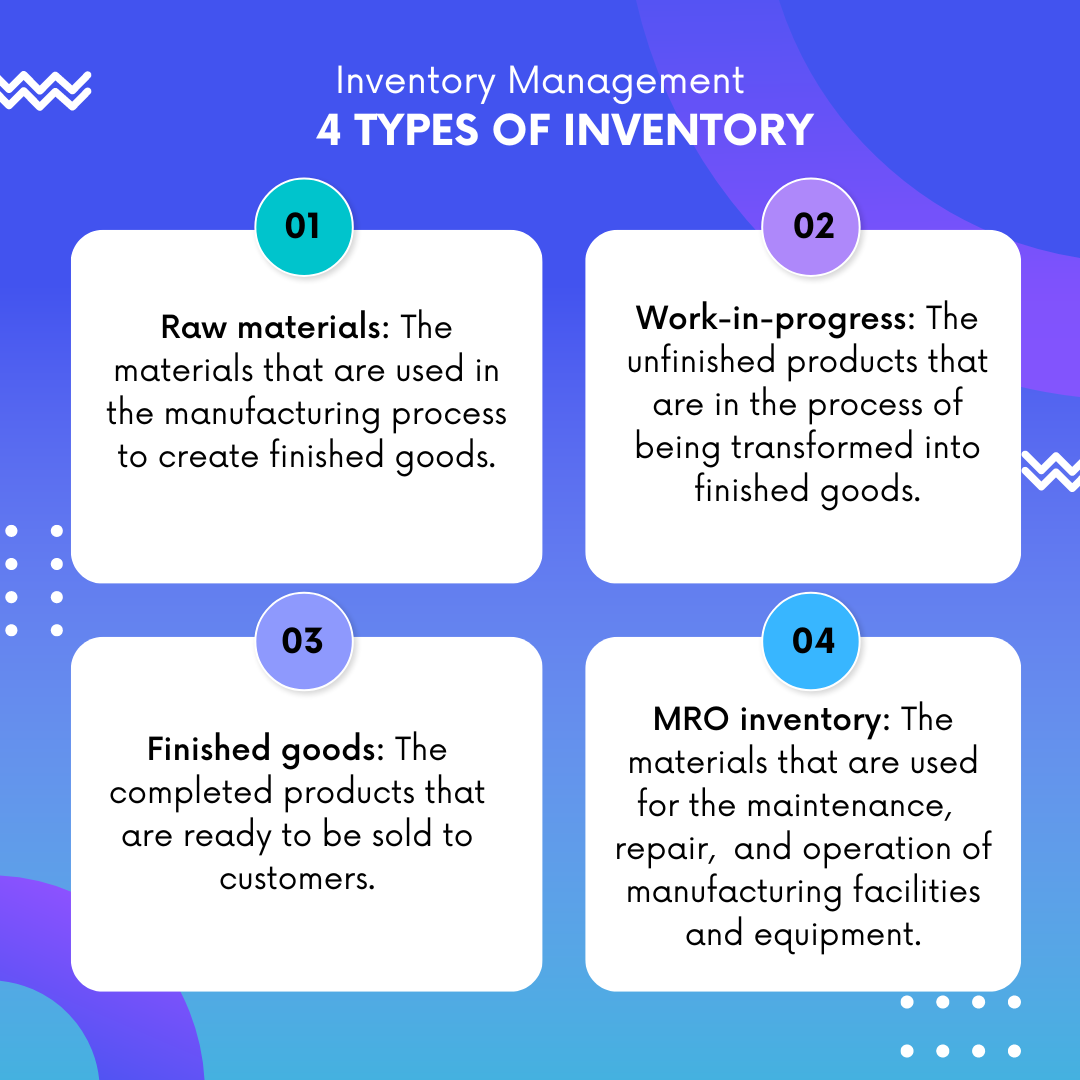
Pick and Pack Process: A Guide to Successful Order Fulfillment
The world of eCommerce is booming, and with it comes the need for efficient order fulfillment. A well-oiled pick and pack process is the backbone of any successful eCommerce business. In this comprehensive guide, we will delve into the intricacies of the pick and pack process, explore various picking and packing methods, and provide optimization […]
Read More
Agile Inventory Management – Process, Benefits, and Challenges
Agile inventory management is an approach to inventory control that emphasizes flexibility, collaboration, and continuous improvement to optimize inventory levels and minimize costs. It is based on the principles of agile methodology and involves continuous monitoring of inventory levels and customer demand to quickly adapt to changes in demand and supply. The use of data […]
Read More
Four Types of Inventory in the Manufacturing Industry
Inventory refers to the stock of goods or materials that a business holds for the purpose of resale, production, or consumption. It includes all the raw materials, work-in-progress, finished goods, and other supplies that a business has on hand at a given point in time. Inventory management involves the planning and control of the flow […]
Read More
Bill of Materials Management: The Essential Guide
A Bill of Materials (BOM) is a comprehensive list of all the materials, parts, components, and subassemblies required to manufacture a product. It provides a detailed description of each item, including part numbers, quantities, and the source of each item. BOMs are used to ensure that all the necessary materials are available before the manufacturing […]
Read More
Production Planning: Process, Factors, Challenges and Best Practices
Production planning is the process of designing and scheduling the production process to meet the demand for a product or service. It involves identifying the necessary resources, such as raw materials, labor, and equipment, and allocating them to ensure that the production process runs smoothly. Effective production planning is essential for businesses to meet customer […]
Read More
Physical Inventory Management: Importance, Key Aspects, and Best Practices
Physical inventory management refers to the process of managing and controlling a company’s physical inventory of goods or products. It involves tracking inventory levels, ordering new inventory when necessary, and monitoring the movement of goods within the company. Effective physical inventory management is essential for businesses to maintain accurate inventory records, optimize inventory levels, minimize […]
Read More
Boost Profits & Reduce Costs: Effective Inventory Strategies for Seasonal Businesses
Inventory management for seasonal demand can be challenging, as it requires businesses to balance the need to maintain adequate stock levels during peak seasons while also avoiding excess inventory during slower periods. The importance of inventory management during seasonal demand lies in the fact that businesses need to ensure they have enough stock to meet […]
Read More
Slow-Moving Inventory : Importance, Challenges and Best Practices
Slow-moving inventory refers to products or items that have a low demand or sales volume over a long period of time. These items are often characterized by a low turnover rate, meaning they remain in inventory for a longer period of time than other products. Slow-moving inventory can include products that are out of season, […]
Read More
Delivery Management: Streamlining Operations for Success
Delivery management is the process of planning, executing, and monitoring the delivery of goods or services to customers. It involves coordinating the activities of multiple teams and departments, including sales, marketing, production, and logistics. The goal of delivery management is to ensure that goods or services are delivered to customers on time, in full, and […]
Read More
Cross-Functional Collaboration in Inventory Management
Cross-functional collaboration in inventory management is the process of different departments and teams working together to ensure that inventory levels are maintained at the right level, without any excess or shortage. It involves breaking down silos between departments and fostering collaboration and communication among individuals with different functional backgrounds, such as sales, marketing, procurement, supply […]
Read More